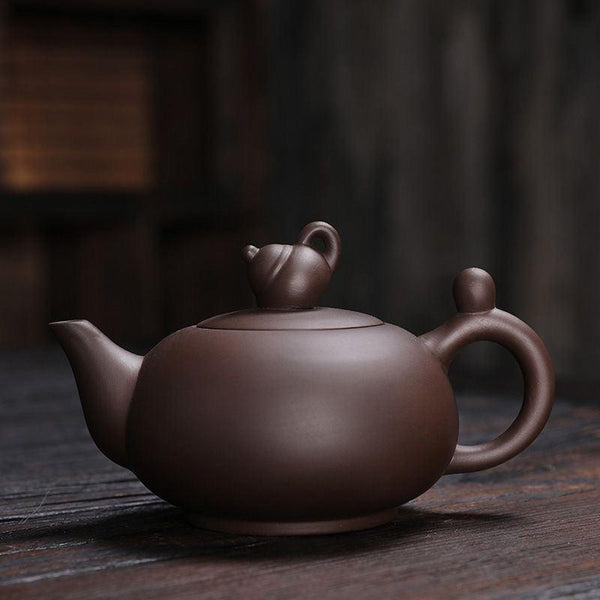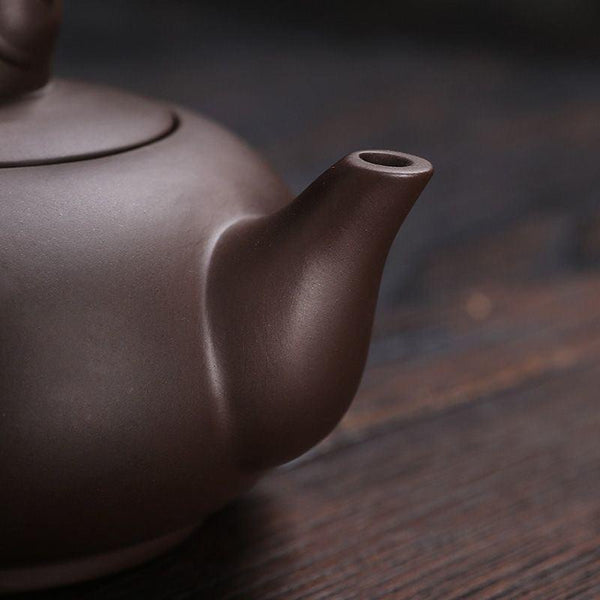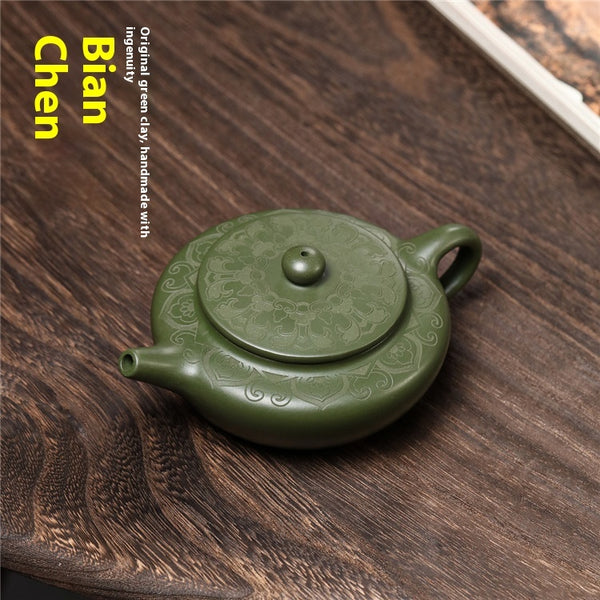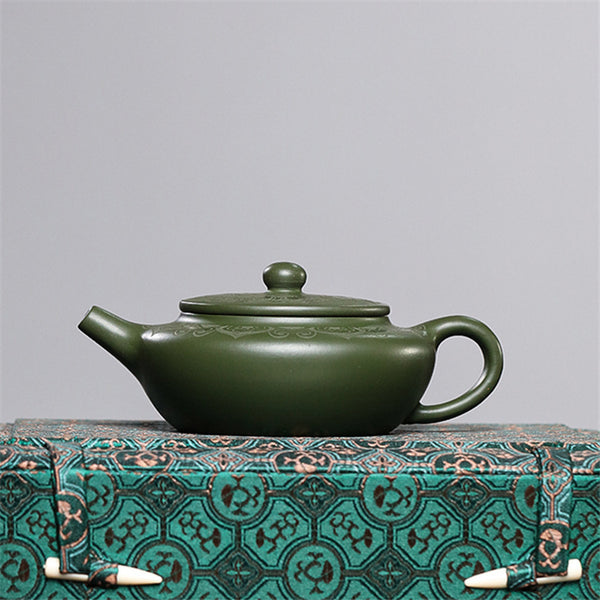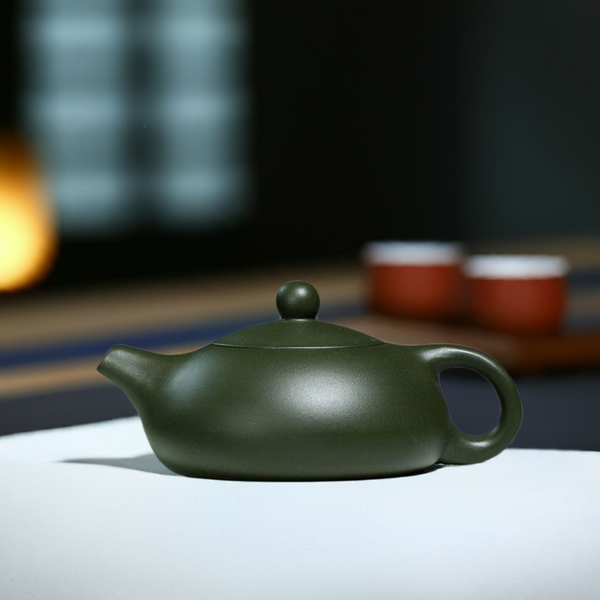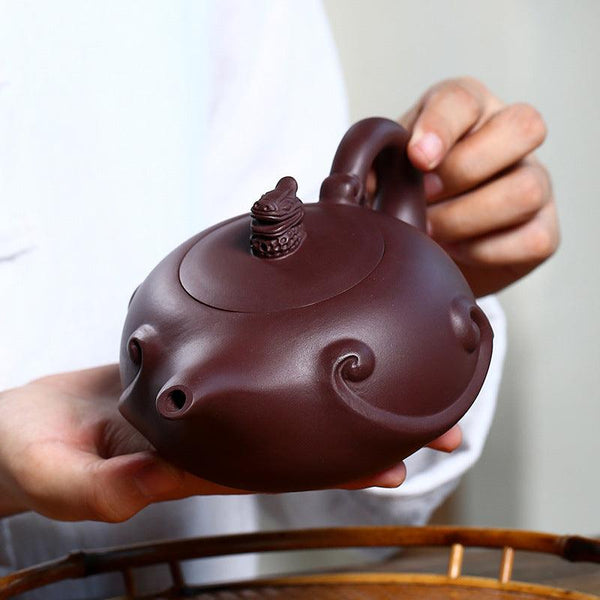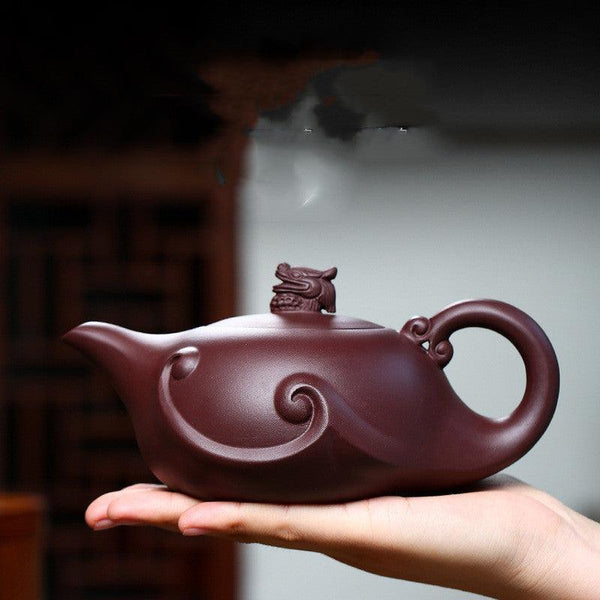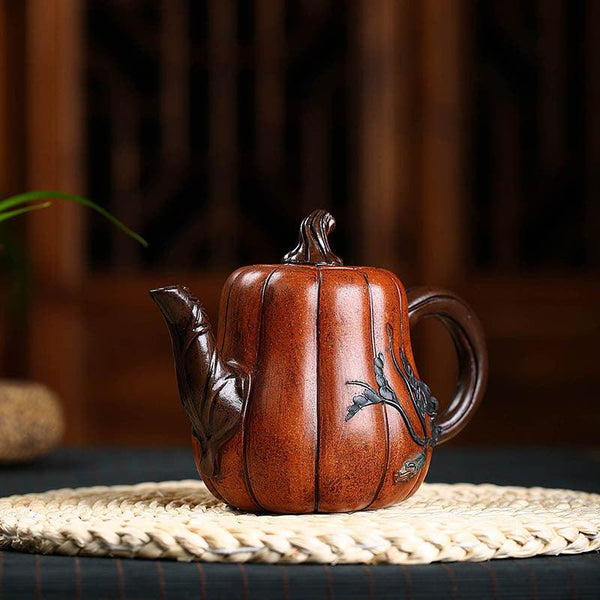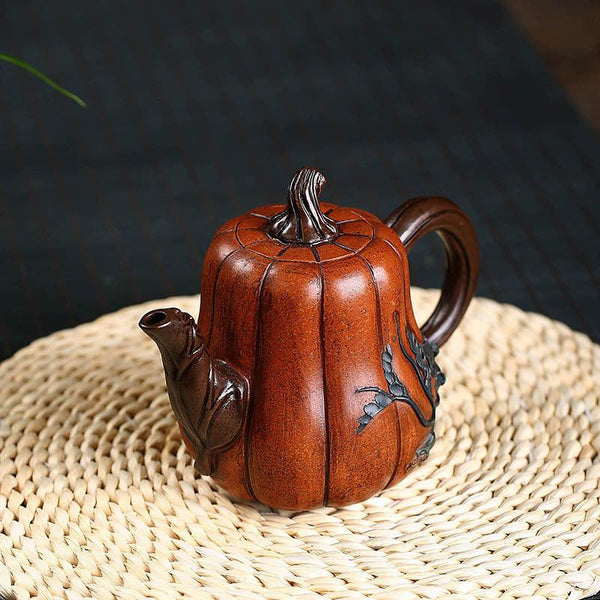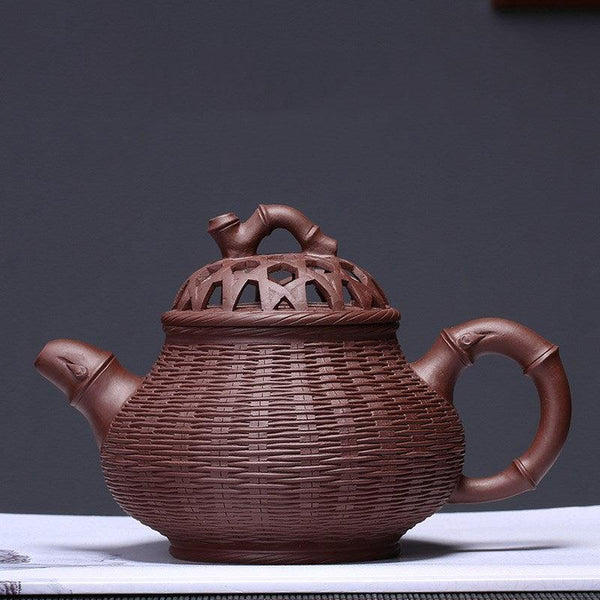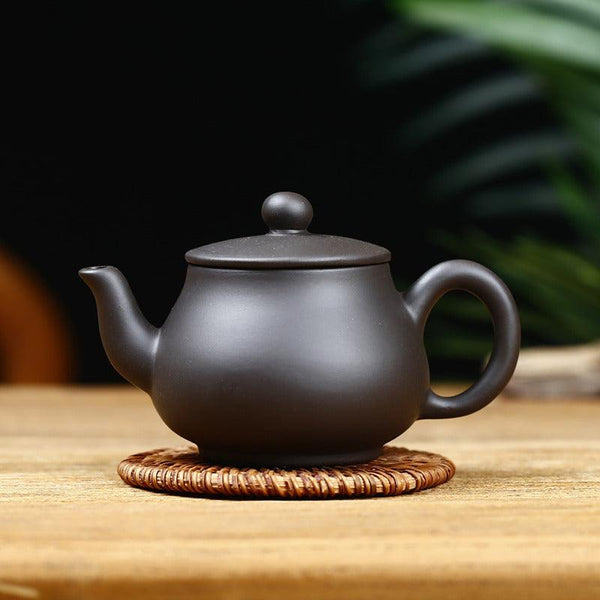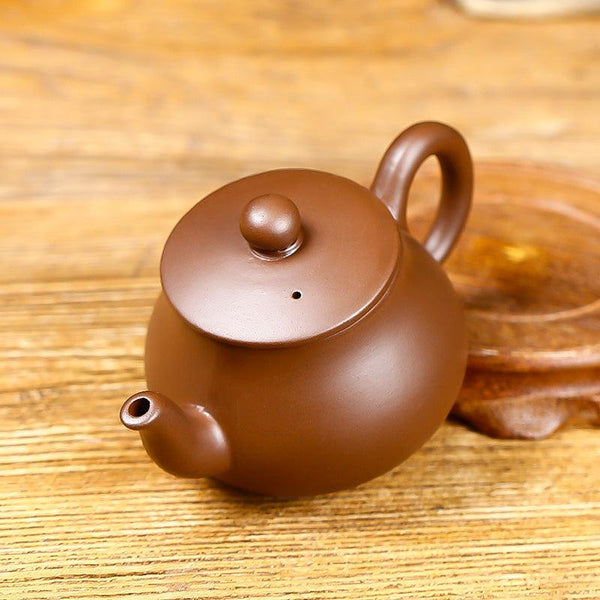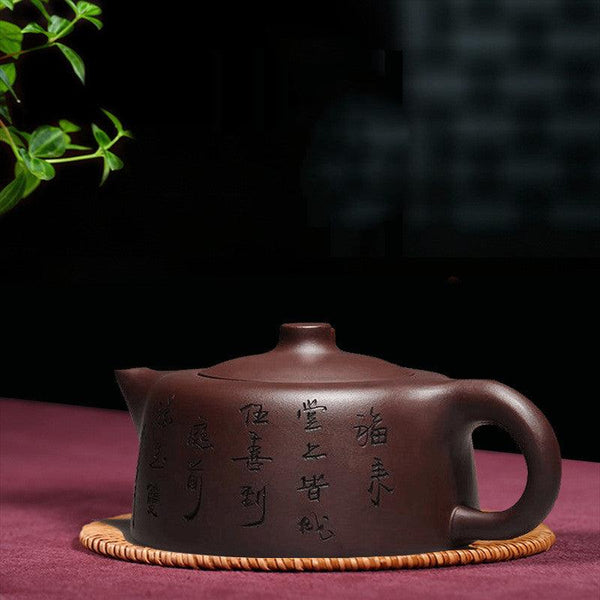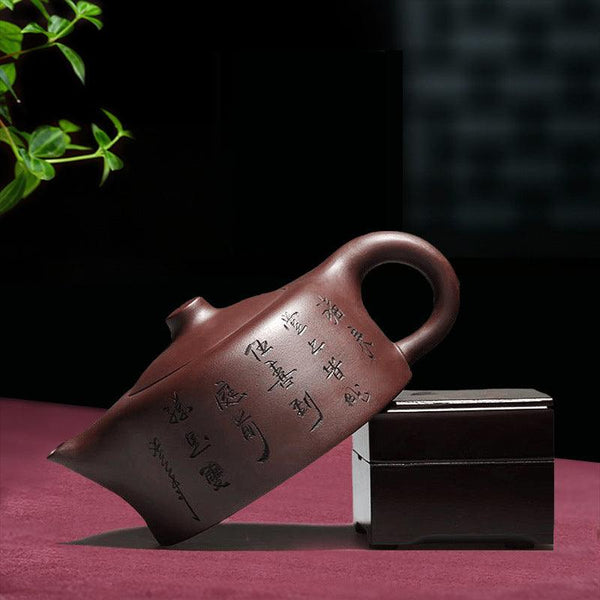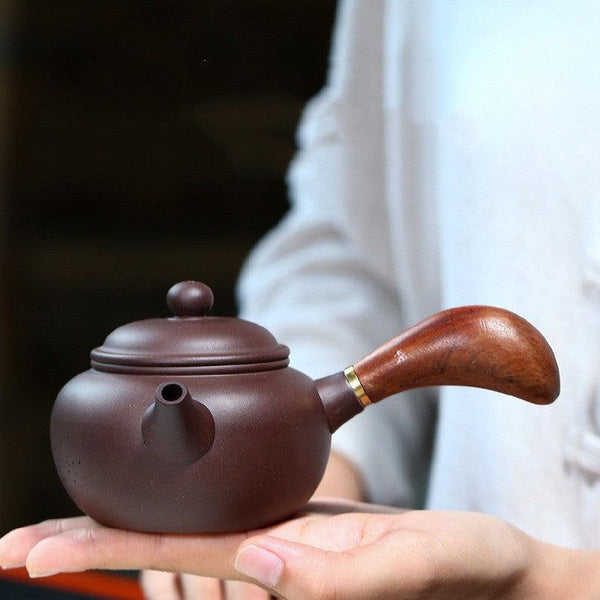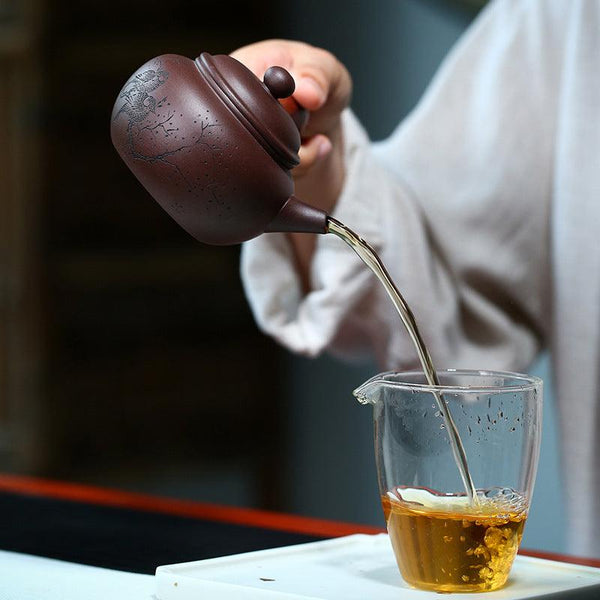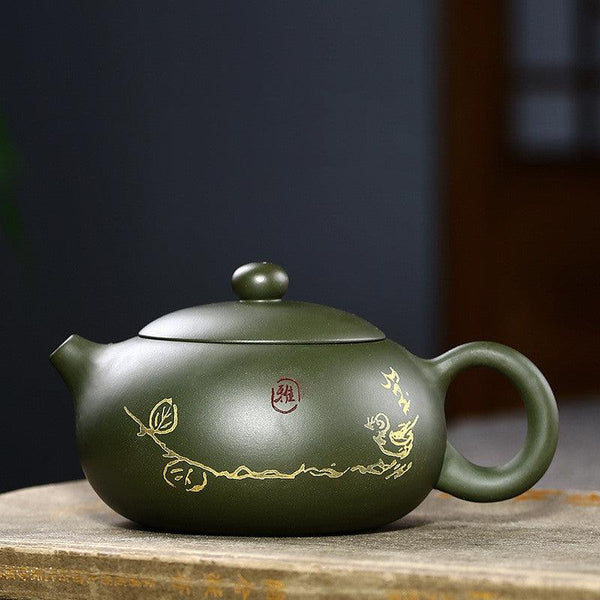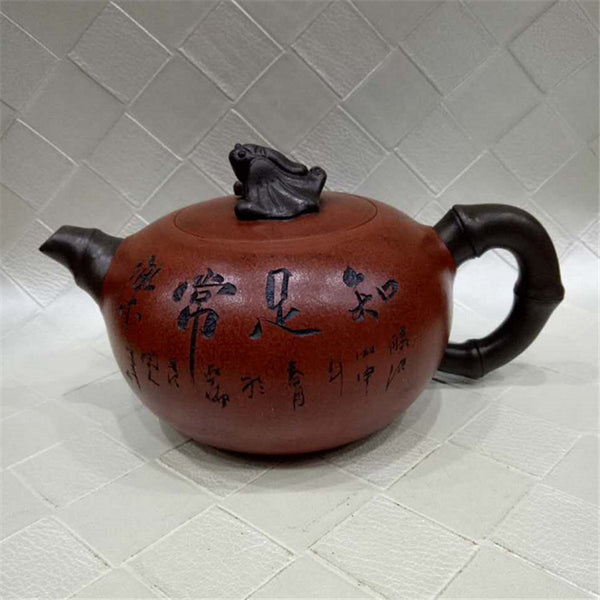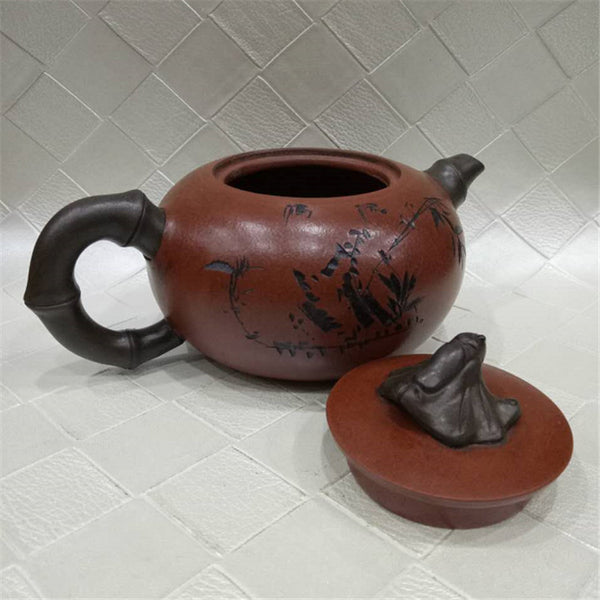A fine teapot is more than just a tea-brewing utensil; it's a work of art imbued with culture and craftsmanship. How can one discern their true value? This article will provide a professional perspective on the five key aspects of teapot appreciation and collection.
1. Materials
The clay is the lifeblood of a teapot and determines its fundamental value. High-quality clay not only enhances its practicality but also reveals its unique artistic beauty through long-term care.
Zisha Teapot
The most valuable raw clays are purple clay, red clay, and Duan clay from Huanglong Mountain in Yixing. Purple clay has a rich, steady texture, red clay is as bright as cinnabar, and Duan clay has distinct grains and excellent breathability. Its cross-section exhibits a natural gritty texture and absorbs water slowly, typically within 3-5 seconds. With long-term use and careful care, the surface of the teapot will gradually develop a soft, jade-like luster, reminiscent of the lustre of ancient jade.
Porcelain Teapot
Body density is a key indicator. A teapot made from high-quality porcelain clay will emit a crisp, bell-like sound when tapped, indicating a dense structure. A dull sound is often associated with inferior pottery, which is prone to cracking or deformation.
Regarding glaze quality, blue and white pottery with a subdued color often uses Sumaliqing. Monochrome glazes, such as sacrificial red, require an even, rich, and mirror-like finish to be considered excellent. If the glaze exhibits tiny pinholes or glaze flow defects, the quality is inferior, affecting the overall beauty and durability of the pot.
Metal Pots
Pure silver pots (purity > 99%): The pot body is typically engraved with the "Fu Yin" or "S999" mark. Oxidation naturally develops a warm yellow luster, highlighting its rustic charm. Low-quality silver-plated pots are susceptible to blackening due to sulfides, so caution is advised when identifying them.
For iron pots, sand iron is superior to rock iron. Sand iron pots have no chemical coating on the inner wall, resulting in a rugged, powerful cast surface with distinct textures. The lid fits snugly, preventing steam from escaping during boiling, thus improving heat retention.
2. Craftsmanship
Handcrafted marks are a key factor in increasing the value of a teapot.
Molding Technique
- 100% Handmade Teapot: The inner wall will show visible marks of clay pieces joining together and fingerprints, and the spout and handle will exhibit subtle asymmetry from hand-finishing.
- Semi-Handmade Teapot: This is formed using a mold but requires meticulous hand finishing. Its value is approximately 30% to 50% of that of a fully handmade teapot.
- Casting Teapot: The body is thin and light, lacking any grain, and the inner wall is as smooth as a mirror. The market price is generally less than 100 yuan.
Precision
- Line Tension: The spout, handle, and knob are aligned, allowing for smooth, columnar water flow (over 15 cm continuous flow) and clean, efficient water collection.
- Jointing Technique: The stitching is well-finished, with smooth, burr-free corners and a smooth lid rotation (clearance less than 0.5 mm).
Decoration:
- Engraving Value: Calligraphy by renowned artists (such as the Five Great Masters of Pottery) is vigorous and powerful, with appropriate white space, offering significant potential for appreciation.
- Difficulty of Kneading Clay: The colored clay blends naturally like flowing clouds, while inferior clays have stiff, sticky-like patterns.
3. Authors
| Rank | Title | Premium Value |
| National Master | Chinese Arts and Crafts Master | $50,000+ |
| Provincial Master | Provincial Arts and Crafts Master | $5,000+ |
| Senior Arts and Crafts Master | Senior Engineer | $1,500+ |
| Amateur Artist | No Professional Title, but Excellent Craftsmanship | $600+ |
| Commodity Pot | No Signature or OEM Mark | $150+ |
4. Scarcity
Limited production and age are key factors in increasing the value of teapots.
Rarity of Clay Materials
Teapots made from rare clay materials such as No. 4 Well Dicaoqing (closed mine) and Dahongpao Zhuni (depleted mine) typically see their value increase by 3-5 times. Old Republican-era green clay teapots with added cobalt oxide are rare, and authentic examples inevitably possess a natural patina formed over time.
Age Value
- Dating of old teapots: Ming and Qing dynasty teapots feature inscriptions in a simple, ancient style (often inscribed with a bamboo knife), and the body is relatively thick.
- Key Points for Identifying Patina: Authentic patina is warm and moist, appearing to permeate the teapot; fake, aged patina resembles oily stains and can be removed with alcohol.
Special Significance
Commemorative teapots (such as those made by Gu Jingzhou specifically for APEC) or award-winning works often carry unique cultural value.
5. Practicality
A teapot that can not brew good tea is merely decorative; practical functionality is paramount.
Functionality Test
When poured 70% full, the water should flow smoothly and forcefully, forming a parabola exceeding 20 cm. When the water is turned off, the spout should be clean and sharp, with no dripping.
The teapot should feel stable in the hand. A 200ml teapot should be easily lifted with one hand after being filled with water.
Tea Compatibility
The double-pore structure of a purple clay teapot requires verification: After filling it with hot water, observe whether fine water droplets slowly seep out of the teapot's walls, which is evidence of its breathability.
While a smooth porcelain teapot's glaze does not affect the flavor of the tea, visible cracks on the interior can easily harbor tea stains, diminishing its value.
Maintenance Considerations
Duan clay teapots are susceptible to tea staining, while Zhu clay teapots are at risk of cracking due to large temperature fluctuations. These teapots are challenging to maintain and require extreme care when collecting.
Conclusion
The true value of a teapot lies far beyond the hammer price at auction. It lies in the fragrance of tea that is awakened with every pour of water. When your palm caresses the warm texture of the teapot, and the tea brews freely within the meticulously crafted space, a subtle harmony is achieved between you, the teapot, and the tea. In that moment, you will finally understand: value lies in the long-lasting legacy of an object, the resonance between the spirit of craftsmanship and the essence of the tea ceremony.


